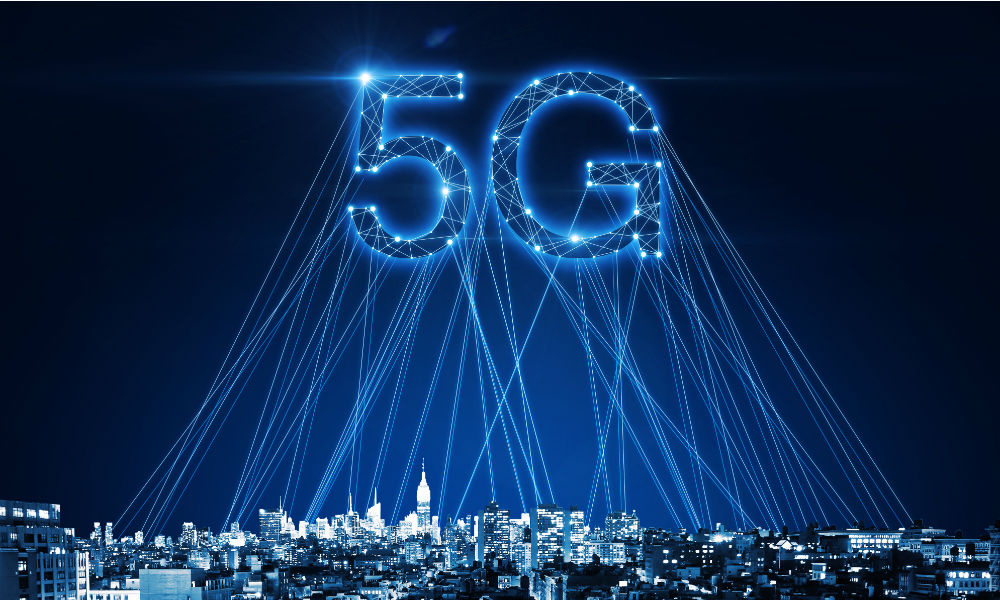The Future of 5G Innovation May Be Found in Neutral Host Models

Among all the technological innovations to hit the market since we entered the digital age, 5G certainly has the most potential to revolutionize society and leave a lasting impact. The fifth-generation wireless technology offers extremely low latency rates, which make for faster, smoother, and more reliable connections. Although 5G networks began rolling out in the United States and around the world in 2018, the technology is now expected to fuel transformative new technologies, not just for consumers but also for businesses, infrastructure, and defense applications.
However, while on a country-wide consumer scale, 5G networks can be a critical part of the solution when it comes to closing the digital divide that plagues close to sixty percent of America, for enterprises the real potential of 5G lies in private networks. Private 5G refers to a mobile network that is technically the same as a public 5G network, but which allows the owner to provide priority access or licensing for its wireless spectrum.
Private 5G provides greater operational control and flexibility for enhanced safety and quick response times when changing business needs. Organizations can all also prioritize traffic for their own business use cases, allowing everything to get done efficiently. These types of enhancements make private 5G very enticing for enterprises, with the global private 5G network market size already being valued at USD 1.38 billion in 2021, and is expected to expand at a compound annual growth rate (CAGR) of 47.5% from 2022 to 2030.
Because of the benefits that a private 5G can offer, enterprises are increasingly looking for the best way to leverage the technology. For many enterprises, their solution to easy and efficient private 5G adoption today comes in the form of neutral host models (NHM).
Neutral host models, unlike traditional models, allow multiple parties - both private and public - to use the same network that may be managed by a third-party managed services provider (MSP) or the enterprise organizations themselves. This enables private mobile network devices and public mobile network operator (MNO) subscribers involved to maintain connectivity and ensure network coverage.
In simple terms, a neutral host allows third parties such as enterprises, managed service providers, and other mobile operators to leverage existing cellular networks to provide service. This can be done at scale to provide private 5G to services such as autonomous vehicles or dialed back to create a separate cellular guest network at a corporate headquarters. These networks can be deployed in a number of different hybrid configurations, but are mostly configured as either spectrum-based neutral hosts or multi-operator small cell networks. Each can fulfill the job of a neutral host but does so differently.
With the advent of 5G, neutral host models are slowly starting to become more common amongst enterprises of all industries. The global neutral host model market is expected to reach USD 7.81 billion by 2026, and past that, is poised to reach just shy of USD 10 billion by 2028.
“We’re seeing a plethora of neutral host solutions coming to market and expect to see a number of public to private deployments in 2022,” said Chris Swan, Chief Commercial Officer at Federated Wireless. “It’s great to see options and so many of the MNOs beginning to embrace these innovations and the benefits to their subscriber base.”
Though the technology is still relatively young, the expected growth can be attributed to the plethora of benefits neutral host models can offer enterprises of all sizes. For example, in the past, private organizations who wanted to build their own private mobile networks would need to invest in base stations, edge devices, and serve as the network operator to ensure the network is running smoothly. Now, a single network can be shared among multiple parties to reduce costs and management overhead.
On top of this, in isolated areas, neutral host models become even more important, as large cellular network operators can’t justify the cost in low population areas. Mining outposts, transportation networks, and agricultural operations are increasingly reliant on 5G as IoT devices become a more critical component of business success. An NHM will enable multiple parties to use the same infrastructure for different purposes.
Apart from general benefits, neutral host models also already have a vast number of practical use cases where the technology is making a difference in a variety of industries. The most notable is in education, specifically at universities. College campuses can experience a wide range of reliability and speeds depending on where the device is located on campus. While 5G can provide unmatched speeds to mobile devices, it has more difficulty penetrating through walls to reach areas indoors. A cluster of private cellular access points can help bring 5G coverage indoors and to students through a neutral host network no matter where they are on campus.
“The ability to move easily from Public to Private Wireless Networks will make a world of difference to the mobile market”, Swan explained. “Finally, mobile customers can get great, high speed private wireless connectivity at work, school, venues, home and easily move to the public network when they desire.”
Overall, 5G adoption is not expected to slow down anytime soon, as more practical uses for the technology are found with every passing day. This makes being able to adequately leverage 5G, public or private, essential for enterprises as we push further into the digital age. Neutral host models allow enterprises to easily leverage private 5G, allowing them to stay competitive with other organizations, and keep up with rising consumer demands.
Edited by Maurice Nagle

